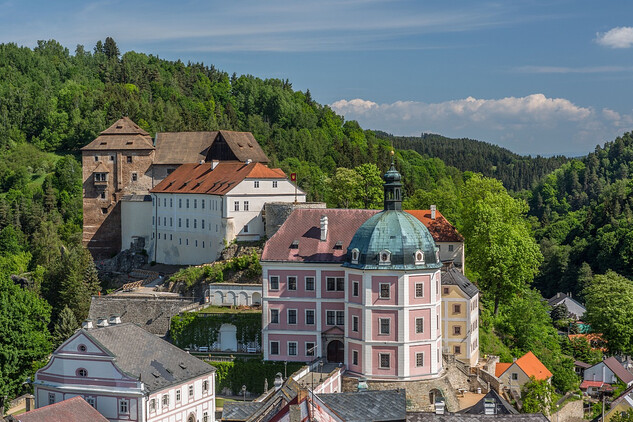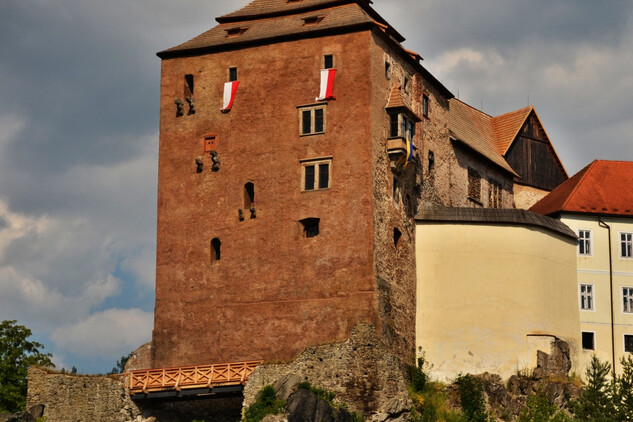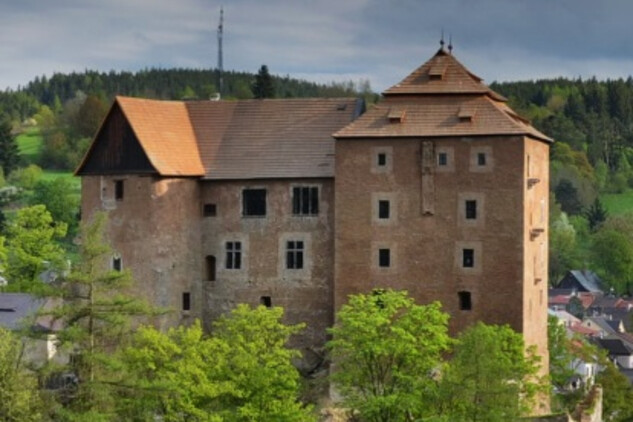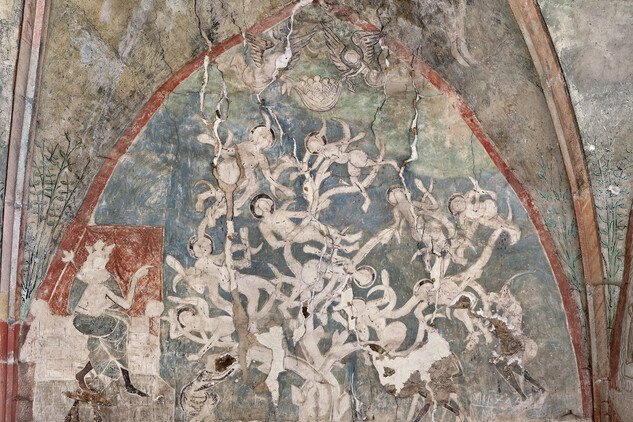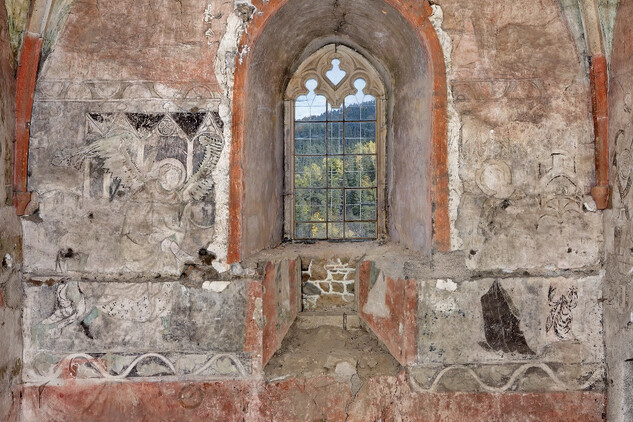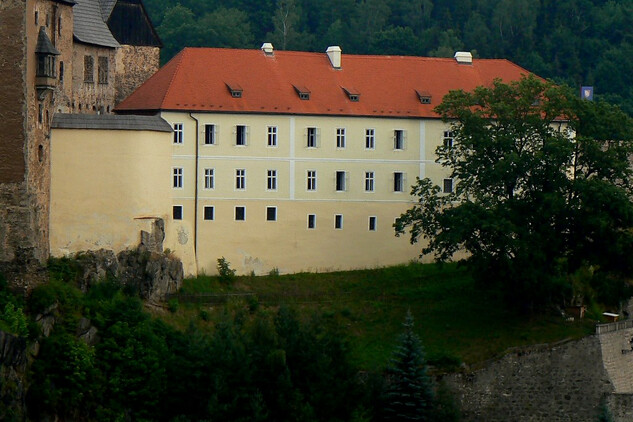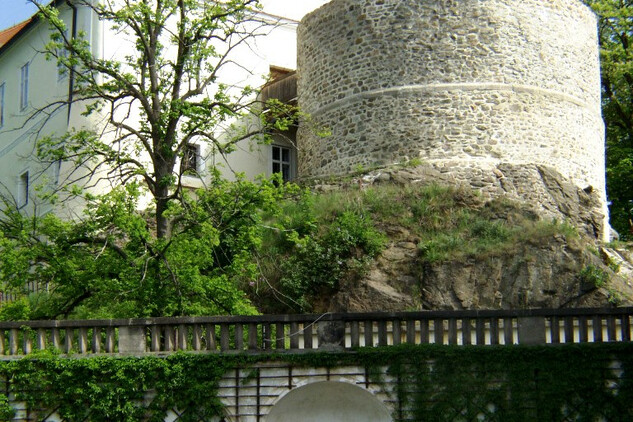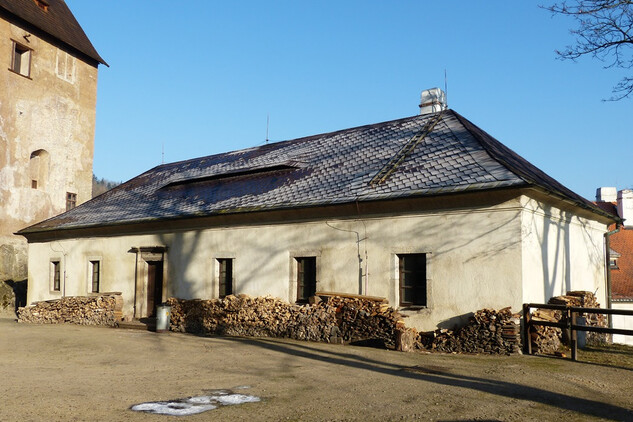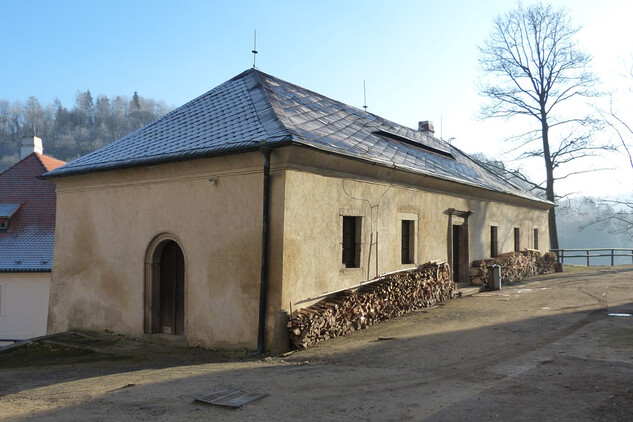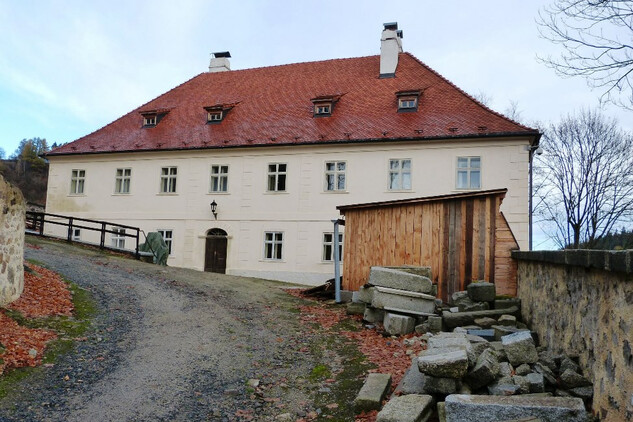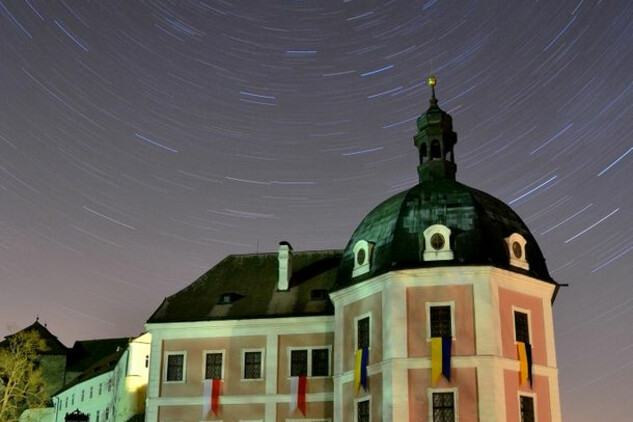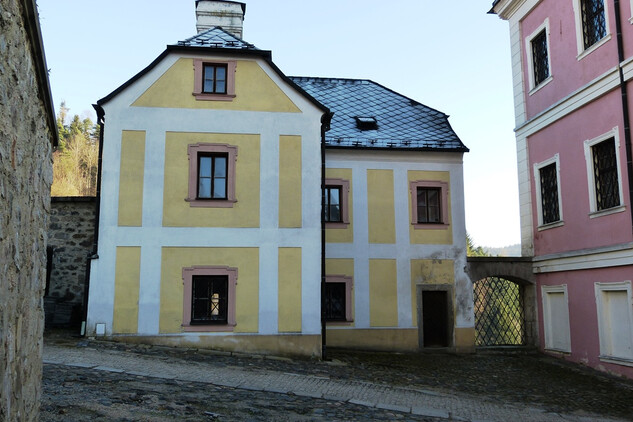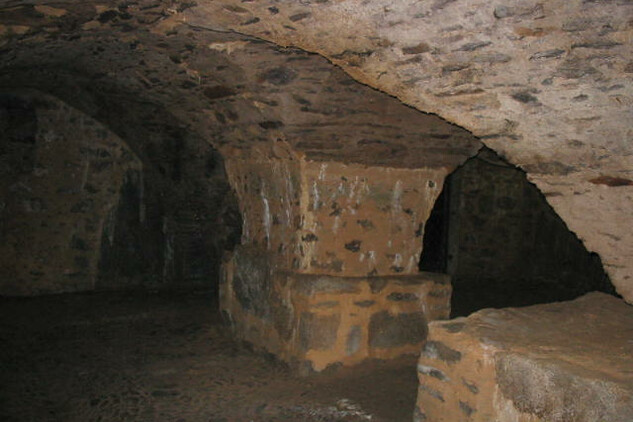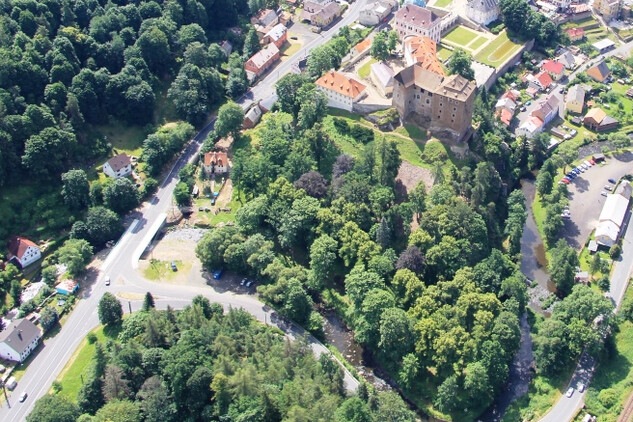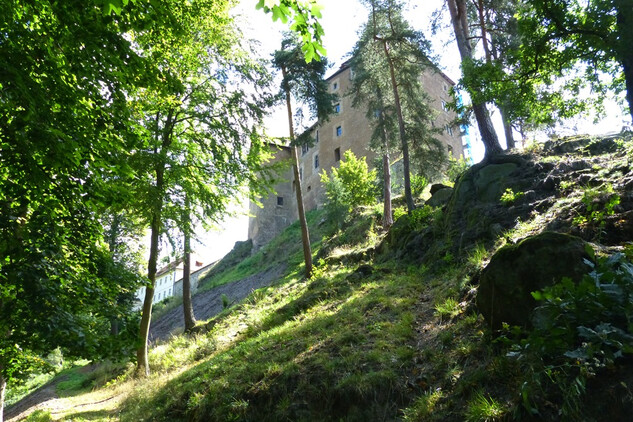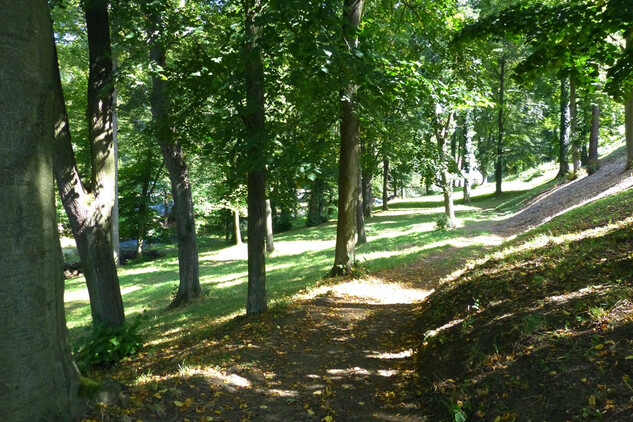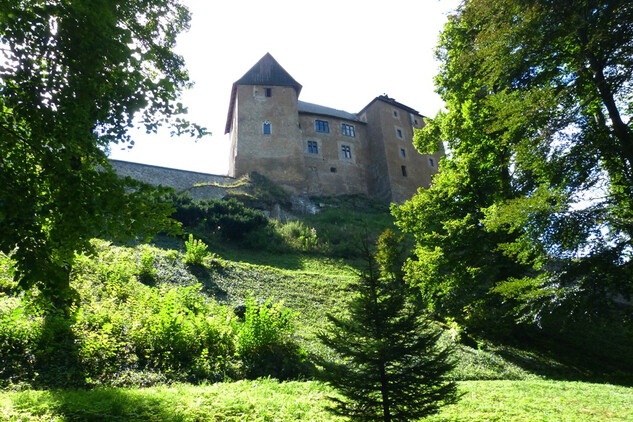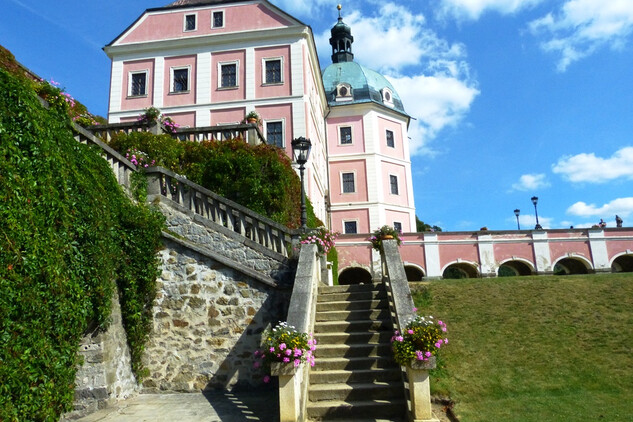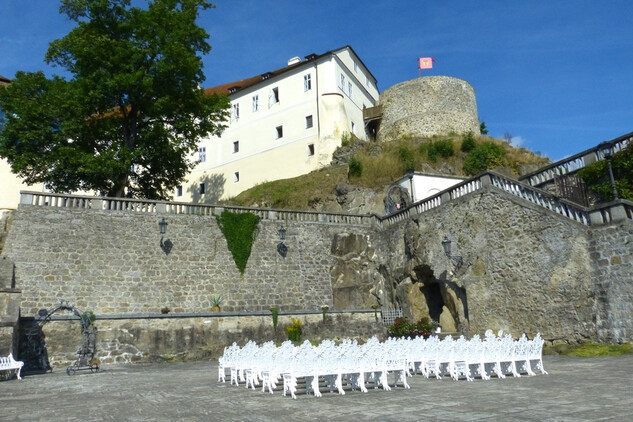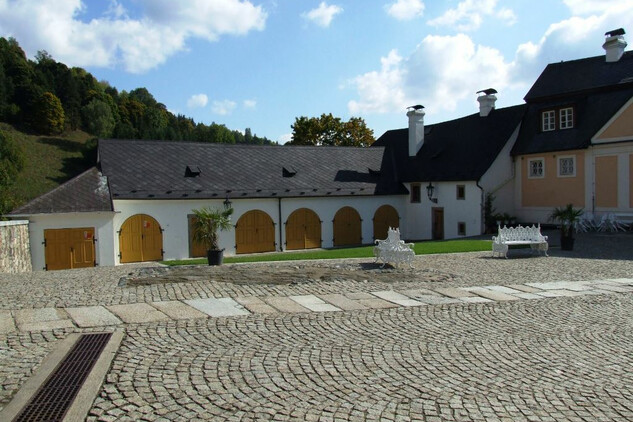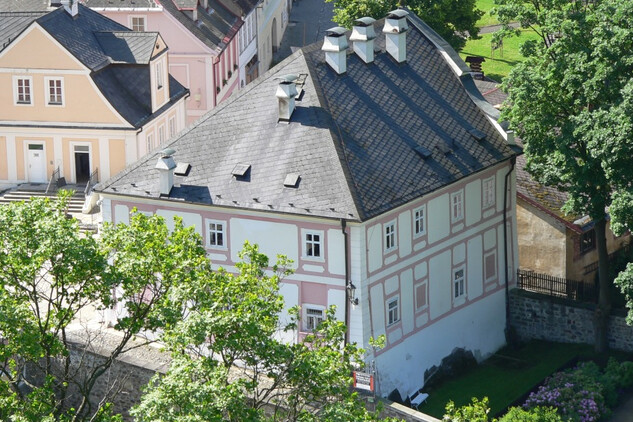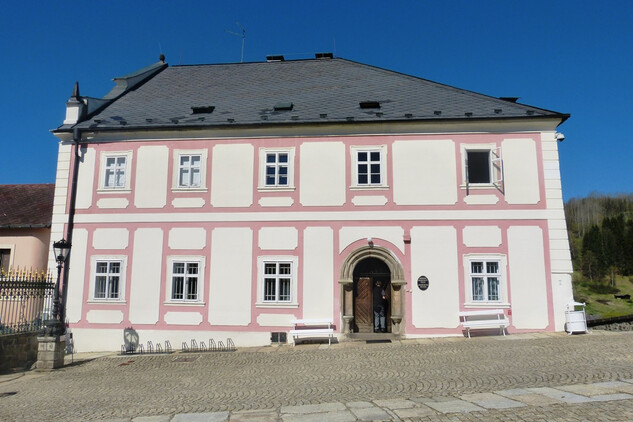Historical buildings in the Premises
The Bečov State Castle and Chateau cosists of a unique set of historical buildings. All architectural styles are represented here, from the late medieval castle through Classicist reconstruction to the Baroque chateau.
Bečov Castle
The castle consists of an outer ward, of which merely the outlines are known, and a castle core situated on a rocky hilltop. The castle´s entrance was guarded by a circular keep. The polygonal tower on the opposite side was probably only later invested with the Visitation chapel. In the second half of the 14th century a massive quadrangular tower or donjon was added to the north-western corner of the central section and surrounded with a ward. The architectural development of the castle was concluded by the construction of an early Renaissance section connecting both quadrangular towers.
Donjon
The four-story residential tower in the castle bears witness to the high aesthetic requirements and comfort of living in those days. The main features of the donjon are the detailed portals, fire hearths with flat brickwork chimneys, paintings in the master´s chambers, the system of lavatories on corbels, unique Gothic and Renaissance furnishings of the rooms, painted timber ceiling and Baroque roof timbers.
Connecting Wing
The Pluhs Rabštejn connected both towers with a new wing consisting of a ground floor and two stories, where new representative rooms, including dining halls with large windows were situated.
Chapel Tower
The castle´s main Visitation chapel, along with its family crypt, was built in the smaller polygonal tower probably between 1352–57. In the late 14th century its walls and vaults were enhanced with exceptional and impressive Gothic paintings depicting scenes from the New Testament. The paintings have been preserved to date.
Pluh´s Palace
Since the castle no longer met the requirements of the Renaissance period in the mid-16th century, the Pluh Palace consisting of three houses, was erected here. Preserved Renaissance elements include the vaulting on the ground floor and interesting archive rooms with in built wooden cabinets on the upper floor. The Palace was later remodelled in the Neo-Classical style. There is stonework from the Gothic battlements in the wall above its gardens.
Bergfrit
The central section of the site was guarded by a circular keep, the last refuge of the castle´s owners. This tower had to be lowered to a large extent in 1623 due to its poor condition. In the 19th century, the preserved 6-metre section was transformed into an observation gallery.
Stables
The former stables were built in the 18th century opposite the Pluh Palace. The structure contains some of the original Gothic battlements in its north-eastern wall, above the access road.
Forest Administration
This administrative building was erected in the 19th century on a top of the castle´s battlements.
New Palace
A Baroque palace was constructed in the 18th century by Jan Adam Questenberk. The unusually lay-out of the site is dominated by tower erected on the site of the so-called Lacron Bastion dating back to the Thirty Years´ War (named after the military commander at the time, Jan de la Cron). A Baroque bridge leads to an early Renaissance entrance portal in the past there was a draw bridge here.
Kitchen
Originally, this Baroque structure was connected with the house via a covered courtyard gallery to facilitate the transport of meals. On the first floor there is a unique clockwork-driven grill.
Brewery Cellars
They constitute a remnant of the brewery which was closed down in the second half of the 19th century. In the spirit of Romanticism, they were utilized as fashionable grottos, accessible from the terraces. Spacious greenhouses used to stand on the large rerrace above the brewery cellars.
Gardens and Park
The gardens and park on the far side of the castle came into existence as a result of substantial earthworks which bear witness to the demands of early garden and landscape architecture. In addition to containing remnants of the original Baroque gardens, the garden also reflects the architectural trends of the 19th and 20th centuries. The largest part of the gardens is situated on what was the castle moat. The garden is divided into six terraces which are interconnected by balustrade staircases, thereby forming an exceptionally picturesque space. Other typical features include both static and dynamic water, as well as topiary. Following the partial demolition of the outer ward, a park was laid out on the slope above a bend in the Teplá river. It is predominantly planted with deciduous trees, commensurate with increased interest in landscape design at the turn of the 20th century.
Carriage House
This Neo-Classical ground-floor structure was the carriage house. In the section there is a stable for one horse with marble troughs.
Burgrave´s Residence
Remodelled in Neo-Classical style, this Burgrave´s (Steward´s) residence contains remnants of the previous Gothic structure. Its portal has Saxon Renaissance elements.
